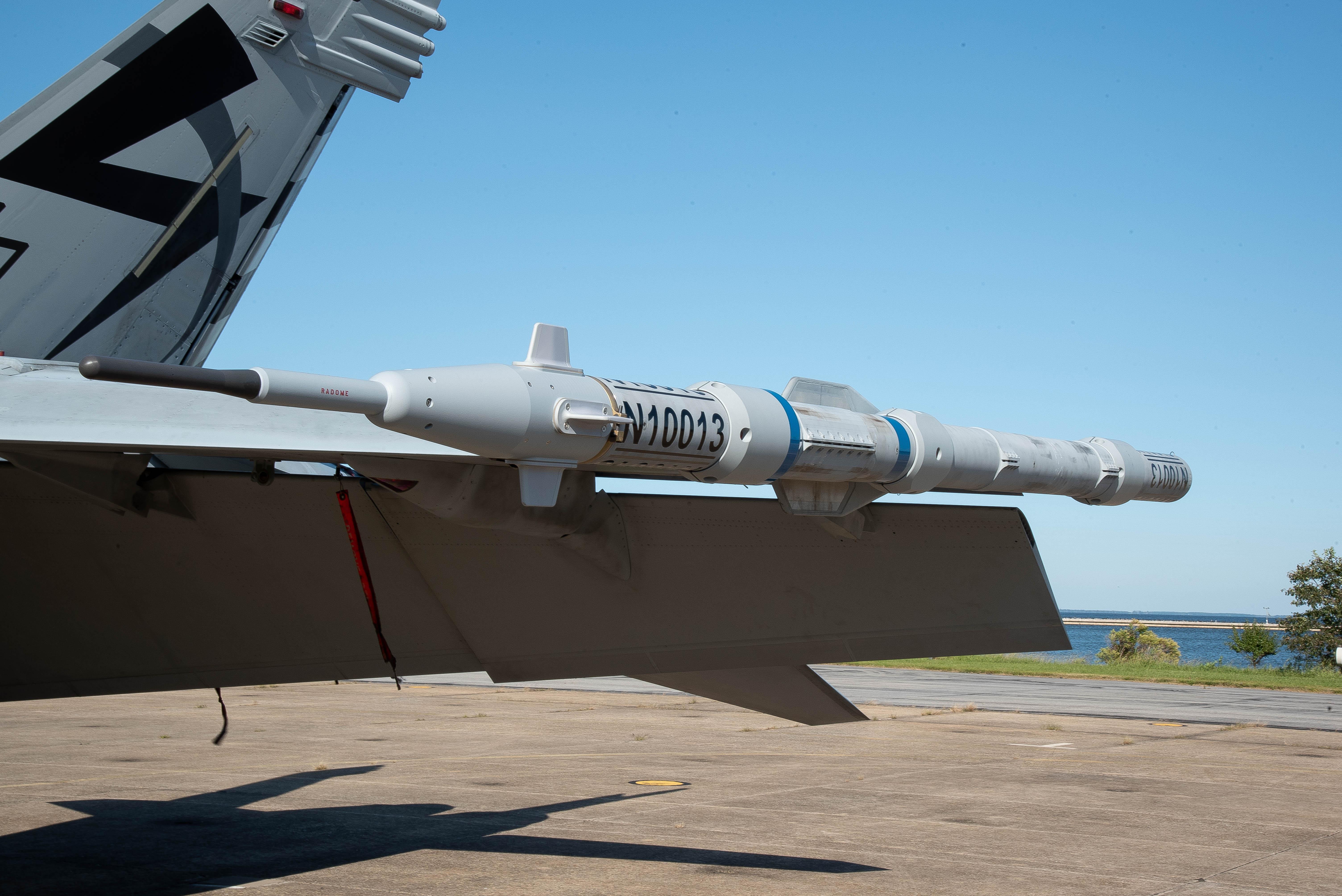
The Tactical Combat Training System Increment II (TCTS II) pod successfully completed its initial hardware qualification testing at Patuxent River Nov.6.
NAVAL AIR SYSTEMS COMMAND, PATUXENT RIVER, Md.
--
The Naval Aviation Training System and Ranges program office (PMA-205) recently completed testing its next- generation air combat training system, the Tactical Combat Training System Increment II (TCTS II), on an F/A-18E/F Super Hornet at Naval Air Station Patuxent River.
The latest series of tests, conducted by Air Test and Evaluation Squadron (VX) 23, are the culmination of innovative, strategic planning across multiple organizations working together with industry to complete this mission with urgency.
“It is a significant milestone event when a system moves from lab testing to aircraft testing at Pax River. Due to the hard work of our government and industry team, these tests are meeting program schedule dates to enable low rate production this April,” said Capt. Lisa Sullivan, PMA-205 program manager.
Traditional air combat training missions have included a combination of live and simulated range training missions designed to prepare aircrew for real world combat with adversaries. As training requirements have changed over time, the Navy and Marine Corps have worked with industry to find innovative methods to revolutionize the way air combat training is conducted while improving integrated training readiness at the same time.
The TCTS II system, developed by Collins Aerospace Systems, Cedar Rapids, Iowa, is an open architecture system that enables highly-secure air combat training between aircraft. It replaces and advances the existing range training infrastructure and fields the first certified encrypted, multiple independent levels of security training equipment in both airborne and ground equipment.
“This is one step closer to bringing these real-time training capabilities to the warfighter, in the end allowing them to train like they fight,” said Melissa Benish, PMA-205 TCTS II lead assistant program manager for test and evaluation. “Our strategy is developmental test with a focus on mission-level requirements.”
The TCTS II system, developed by Collins Aerospace Systems, Cedar Rapids, Iowa, is an encrypted, multi-level security, open architecture system air combat instrumentation system that enables live, blended with synthetic real-time air combat training with additional onboard interactive training models. The system enables aircrew to train in air combat maneuvering with both real and simulated weapons and electronic warfare tactics with simulated threats.
TCTS II has an open systems architecture that interfaces with current training assets such as electronic warfare threat emitters and ground-based systems. The advanced processor, advanced data link, and capability for advanced waveforms all encompassed within an open architecture ensure the system is scalable to meet current and future requirements while controlling future costs.
Earlier this year, the U.S. Air Force joined the TCTS II program to leverage investments made by the Navy and delivery training capabilities sooner and at a lower cost. The services will work together to use this system to train in real-world environments with real-world threats.
PMA-205 provides full life-cycle acquisition of naval aviation platforms, general training systems, training range instrumentation systems, and distributed mission training centers to provide USN and USMC pilots, naval flight officers, aircrew, and maintainers with the training equipment required to provide lethal capability and operational readiness. The program office manages flight simulators, part-task trainers, maintenance trainers, airborne and underwater training range instrumentation, threat systems, and associated curricula to ensure optimum performance for naval aviation.
Responsibilities include execution of naval aviation’s live, virtual constructive training strategy, execution of the Naval Aviation Simulator Master Plan, commonality and interoperability across training systems, procurement and sustainment of training products and services to include equipment overhaul and/or replacement, engineering changes, modernization and technology refreshes, and future technology advancements for training systems and training ranges.


